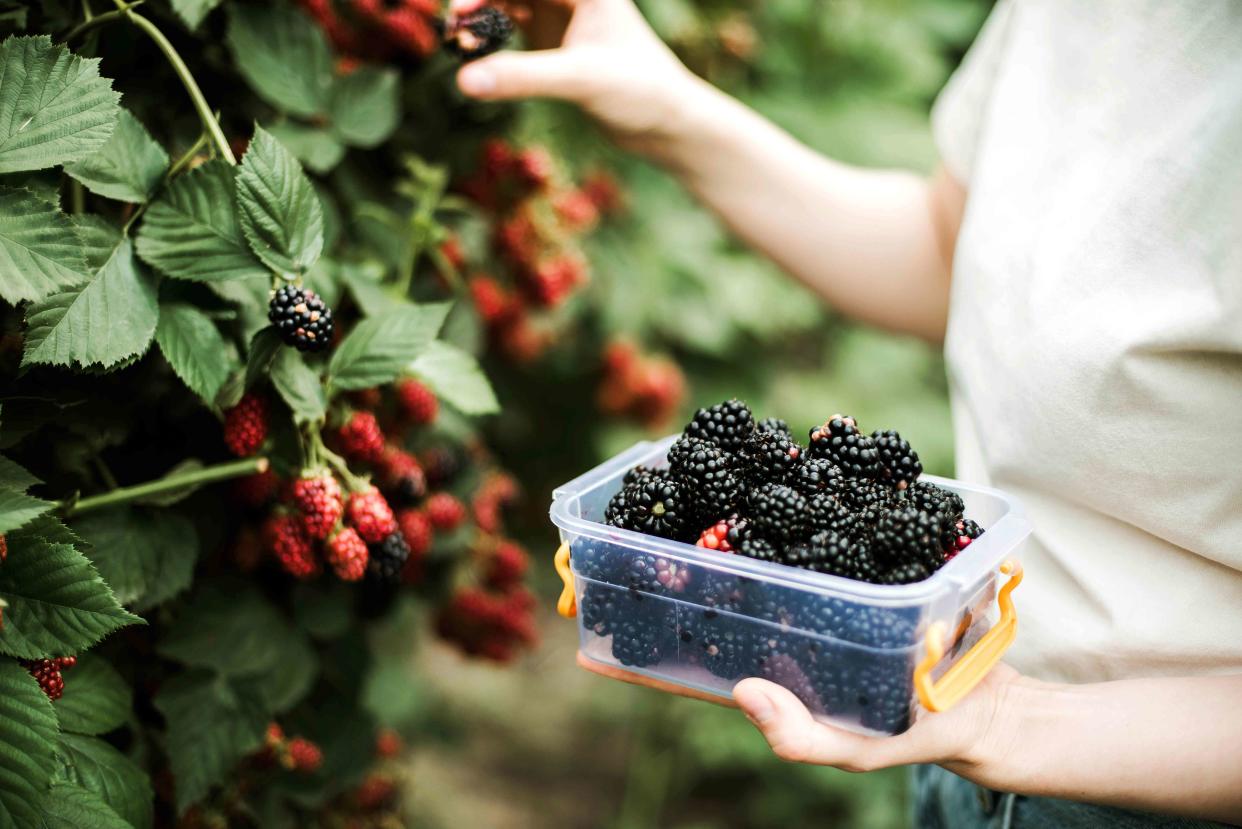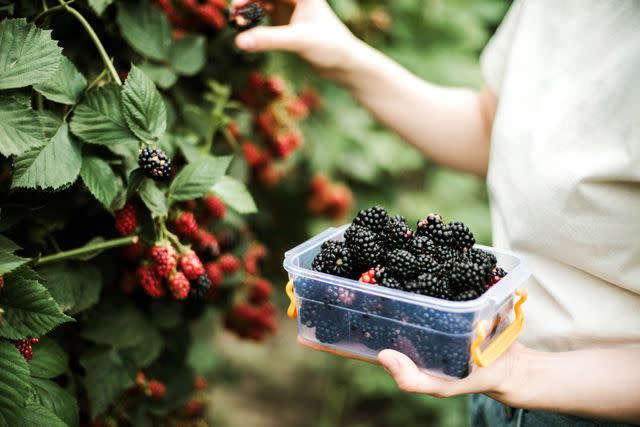Certain Flavonol-Rich Foods—Like Apples and Blackberries—Can Reduce the Risk of Frailty

Getty Images / Cavan Images
Fact checked by Nick Blackmer
New research found that eating flavonol-rich foods could lower the risk of frailty as a person ages.
Frailty often includes symptoms such as unintentional weight loss, decreased strength, and decreased energy.
Experts recommend patients focus on eating a colorful diet, to absorb a variety of plant nutrients like flavonol.
A new study found that eating fruits and vegetables containing flavonols can lower your risk of developing frailty as you age.
About 10% to 15% of older adults experience frailty as they age—frailty is considered a geriatric syndrome that includes symptoms such as unintentional weight loss, decreased strength, decreased energy and fatigue, slower walking speed, decreased mobility, and decreased physical activity.
The condition can lead to a greater risk of falls, fractures, disability, hospitalization, and mortality.
“Frailty’s prevalence varies depending on the definition and measurement used and it is important to note that frailty can also occur in younger adults with certain underlying health conditions,” Jessica Hulsey, RD, LD, told Health. “Diagnosis of frailty occurs when an individual displays three of the qualifying symptoms.”
The study’s findings suggest that consuming just 10 mg of flavonols can be beneficial for decreasing the risk of frailty by 20%.

Getty Images / Cavan Images
What Is Flavonol?
Flavonoids are a class of natural plant pigments with various health benefits that are found in fruits, vegetables, and certain beverages such as tea and wine. Flavonols are a class of flavonoids known to have anti-inflammatory, anticarcinogenic, and antimicrobial properties.
“They include compounds such as quercetin, kaempferol, and myricetin, while flavonoids encompass a broader range of compounds like anthocyanins, flavones, and flavonols,” Hulsey explained.
Flavonols are found in a variety of fruits, such as apples, grapes, and berries, and vegetables, like onion, kale, and spinach. They are also found in perhaps surprising foods such as green tea and unsweetened cocoa.
“Given that flavonoids can mitigate the age-related accumulation of oxidative stress by reactive oxygen species and some flavonoids even target the elimination of age-related senescent cells, they have a role in reducing inflammation and consequent frailty development,” Shivani Sahni, PhD, one of the study authors and expert in the role of nutritional factors on chronic diseases of aging told Health.
Oxidative stress increases as we age and is induced by mitochondrial dysfunction and inflammation. Over time, continuous oxidative stress generates reactive oxygen species and reactive nitrogen species, causing protein and nucleic acid oxidation and eventual cell death.
Sahni emphasized how flavonoids are valuable sources of bioactive compounds with antioxidant properties that can help to delay this process.
Related: The 9 Best Anti-Aging Night Creams of 2023
Focus on Quercetin
Specifically, a flavonol called quercetin can decrease your chances of frailty later in life.
Quercetin is widely distributed in fruits, vegetables, and grains and is known for its antioxidant and anti-inflammatory properties.
“Quercetin is one of the most studied flavonols that is being tested for its benefits in protecting against age-related chronic diseases,” Courtney Millar, PhD, one of the study authors told Health. “Primary dietary sources include apples, citrus fruits, tea, red wine, and dark berries such as blackberries.”
Not only are quercetin and other flavonoids connected to reducing frailty and age-related decline but they are associated with many other health benefits as well.
“Flavonoids have been associated with improved cardiovascular health, reduced risk of certain cancers, and enhanced cognitive function,” Hulsey added. “They also have potential benefits for managing conditions like diabetes.”
“More research is needed to fully understand the mechanisms and establish definitive conclusions regarding the impact of flavonoids on frailty and other health outcomes,” she clarified.
While the study determined that there was not a statistically significant association between flavonoid intake and frailty onset, what it did help determine was that each 10 mg per day of flavonol intake was linked with a 20% decreased risk of developing frailty in older adults.
Further, every 10 mg per day of quercetin intake was associated with a 35% decreased chance of frailty onset.
Adding Flavonol to Your Diet
If you are looking to increase your flavonol intake, adding 10 mg into your diet may be easier than you think. For instance, one medium-sized apple contains about 10 mg of flavonols. Different fruits and vegetables contain a variety of subclasses of flavonols.
Consuming a variety of these types of foods can help to ensure you are eating all different kinds of flavonols to aid in disease prevention.
To increase your flavonoid intake, you can incorporate dietary strategies, such as including a variety of fruits and vegetables into your meals and snacks. Foods particularly high in quercetin include citrus fruits, sage, tea, red wine, olive oil, grapes, dark cherries, and dark berries such as blueberries and blackberries.
“Try to have a mix of colorful options to ensure a diverse range of nutrients, including quercetin,” suggested Hulsey. “You can also experiment with recipes that include quercetin-rich herbs and spices like parsley, dill, and cilantro.”
Related: Can You Eat Too Much Fruit?
For more Health news, make sure to sign up for our newsletter!
Read the original article on Health.

